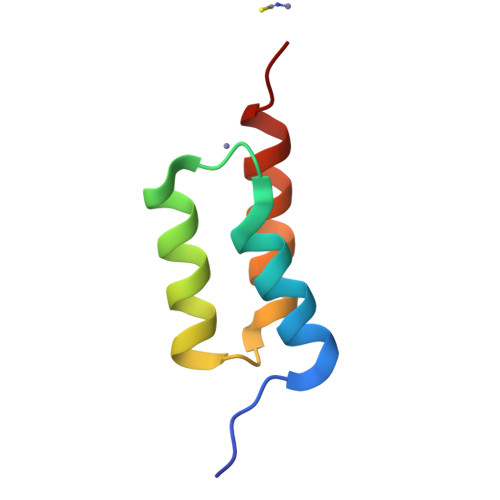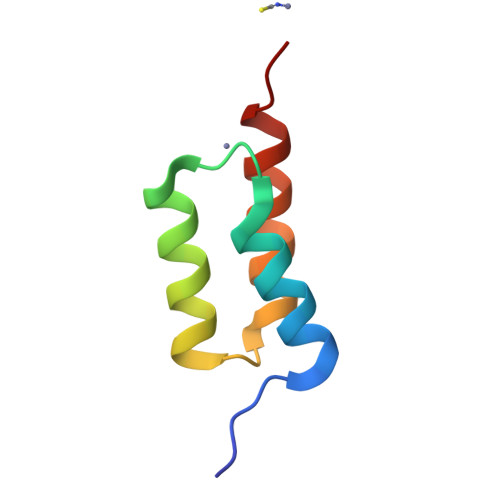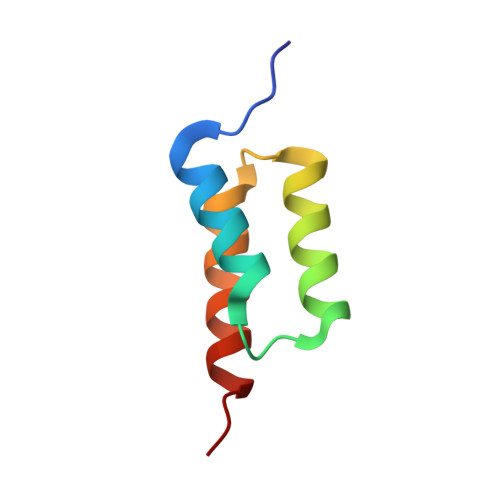Multiscale conformational heterogeneity in staphylococcal protein a: possible determinant of functional plasticity.
Deis, L.N., Pemble, C.W., Qi, Y., Hagarman, A., Richardson, D.C., Richardson, J.S., Oas, T.G.(2014) Structure 22: 1467-1477
- PubMed: 25295398
- DOI: https://doi.org/10.1016/j.str.2014.08.014
- Primary Citation of Related Structures:
4NPD, 4NPE, 4NPF - PubMed Abstract:
The Staphylococcus aureus virulence factor staphylococcal protein A (SpA) is a major contributor to bacterial evasion of the host immune system, through high-affinity binding to host proteins such as antibodies. SpA includes five small three-helix-bundle domains (E-D-A-B-C) separated by conserved flexible linkers. Prior attempts to crystallize individual domains in the absence of a binding partner have apparently been unsuccessful. There have also been no previous structures of tandem domains. Here we report the high-resolution crystal structures of a single C domain, and of two B domains connected by the conserved linker. Both structures exhibit extensive multiscale conformational heterogeneity, which required novel modeling protocols. Comparison of domain structures shows that helix1 orientation is especially heterogeneous, coordinated with changes in side chain conformational networks and contacting protein interfaces. This represents the kind of structural plasticity that could enable SpA to bind multiple partners.
Organizational Affiliation:
Department of Biochemistry, Duke University, Durham, NC 27710, USA.


















